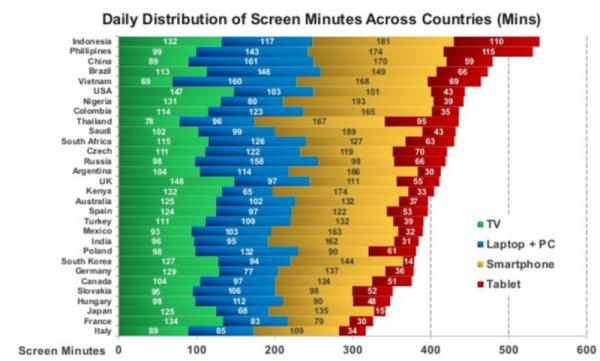 Everyone wants a cool website. Awards in this digital industry go normally to sites and concepts that are cool. Clients and managers come up to us, saying they want something innovative and cool or that they have seen something cool their competitor has done and they want to replicate it.
Everyone wants a cool website. Awards in this digital industry go normally to sites and concepts that are cool. Clients and managers come up to us, saying they want something innovative and cool or that they have seen something cool their competitor has done and they want to replicate it.
Yet the problem many websites are facing is that we concentrate so much in creating cool, avant-garde, up-to-date “stuff” that we forget the end user. When creating and designing a new webpage, strategy, usability, content structure and SEO are as important, if not more important, as design.
What is the point of having an amazing looking webpage if your potential customers do not know how to use it or search engines cannot find it?
Tip #1: Make your website useful for the end user
Design for your audience. Analyse and find out what kind of features, content and information are useful and attractive for the audience you want to reach. What could add value to their experience on the website, so they will come back and recommend the site for others? Whether it is useful tips, expert advice, social experience, consumer reviews, games, or up-to-date information highly depends on your audience.
Tip #2: Make it easy for users to find your website
Do not make it hard for users to find your site. SEO optimise your webpage (title tags, headings, populate the content with keywords…), make sure that robots have found your site and the pages are indexed (make sure you unblock the search bots once you have published the site officially), and link to your webpage from other websites and social networks.
If you are using offline media, do not forget to add your page URL in the end of the commercial, press article, poster, video, display or whatever method you are using. Users can either search for it online or type it directly in the browser to find you.
Tip #3: Make it easy for users to browse through the website
Do not complicate things just for the sake of being pretty. An example of this is the hidden navigation. This means webpages that have hidden hot spots the user needs to hover over to find. Cool or not, it makes it difficult for end user to find content they are looking for.
Therefore it is good idea to stop and evaluate how your website is organized. Ask yourself whether the structure and categories make sense from user perspective and whether visitors can find the information they want quickly. Offer options such as back button, previous search and visible previous categories. Having the previous user journey visible makes it easier for site visitor to navigate. An e-commerce example: home -> women -> shoes -> high heels.
Tip #4: Give different routes for users
Visitors come to your website through different channels (e.g. direct URL, social media, search, blogs…) and many of them do not land directly on your homepage. Visitors in different stages of purchase funnel also behave very differently and this is why it is very important to give them various routes to navigate through the website.
To help user continue their journey after landing to the page, use always visible navigation bar, site map, index page and navigation text links. Remember that this also gives more information for the search engines and helps search bots to navigate across the web platform.
Tip #5: Try to avoid flash
Flash is pretty, but complicated. Flash is not SEO friendly, flash is not mobile friendly and in some cases flash is not even user-friendly. Search robots do not read flash and even with Google visual search you only see an image of a puzzle instead of the flash site or video. Mobile phones do not read flash either, which means that you can lose the leads coming through these devices. Even a normal Internet user might get a barrier accessing your site if he does not have the right version of flash installed.
Of course, in some cases flash does add value to the website enhancing the user experience, for example by showing the product from different ankles e.g. car configurator. Yet before adding some nice animation to the page, think who does it really benefit. You and your managers, who see the page everyday and are bored … or the site visitor?
However, if you really want to have a flash site, create an html backup page and/or mobile site. If you really want to use an intro movie leading to your homepage page, use html5 instead (you can even add a like button if you wish).
Tip #6: Use text, not graphics
Search engines are biased towards text content and do not read the text in the images they run across. It means that even if the website seems to have text containing keywords, it may not be the case. Maybe the web designer is using image files to keep a certain font the same in different browsers or it is done to give the webpage cooler look and feel. Anyhow, the problem is the same: the search engines read nothing and the images take longer to download.
This also refers to graphic CTAs (Call-to-actions). They are very attractive and spotty, yet invisible for search engines. I am not advicing to ditch them, in contrary, since they encourage user to click, but it might be a good idea to also implement text links with long text into the normal html. By long text I refer to the links that are more than a single word and actually describe where the link takes you.
The importance of the SEO optimized text and content has increased especially after Google introduced a significant algorithm change, which puts more weight on fresher content and the text itself reducing the significance of the headers and title tags.
Tip #7: Create a custom 404 error page and redirect broken links
Website content changes constantly and webpages get unpublished causing broken links. It does not only mean that your site visitors might come across one on your website, but also links from other websites into yours get broken. That is bad news, since potential visitors as well as search engines cannot reach your webpage through these links.
This is why it might be worth creating a custom 404 error page, which displays in visitor’s browser if the server cannot find the page. An error page with links to the other areas in your site can help user and search bots find an alternative page on your site. Other solution would be 301 redirect for each link.
Tip #8: Make your website mobile friendly
What is very important to realize is that a standard computer screen is not the same as iPhone or Nokia screen and the PC website looks very different in mobile devices. It is essential to take in account the design and lay-out, the legibility and navigation, and the need of fast and efficient download time. For tips on how to create a mobile-friendly website click here.
Tip #9: Test the website with real users
Having designed and worked with the webpage for weeks or months, it is very easy to navigate across the site and find everything you need. However, pair of fresh eyes can point out the weaknesses and help you improve the user experience.
Tip #10: Do not make an ugly website
Useful and user-friendly are not synonyms for boring and ugly. Web-design is still very important, especially now when Google is using the visual search. Being number one in search ranking is worth nothing if people do not purchase from your site, because it looks … unprofessional.
Website can still be attractive and cool as long as the end user is not forgotten in the process. The point was: make the site SEO and user-friendly, then add the cool stuff on top and win some awards.







